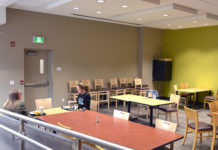
Is there enough social support for the students who may be feeling isolated during these crazy times? With the spring semester recently going online, along with the fall semester, it raises questions as to whether the university is utilizing available resources to provide students with active learning.
Unfortunately, due to social distancing, many students have lost the social support that the university and their peers provide. As a result, it is even more difficult to build the resilience needed to cope with everything going on in the world.
For instance, definite plans regarding future academic or co-op goals cannot be made, due to the uncertainty surrounding the COVID-19 pandemic. Not to mention the anti-black racism being brought to light by recent events and Black Lives Matter protests all over the world, which are triggering and trauma-inducing for many marginalized students.
These stressors make it all the more difficult to adjust to online classes while also maintaining good mental health.
That said, it is important to acknowledge that this is an unexpected situation that none of us could have planned for. Yet, it is still possible to create a supportive learning environment by advocating for the university to provide adequate resources for remote learning. In an interview professor Kristina Llewellyn, whose focus is on education and equity, stresses the importance of using many methods to keep students, faculty and staff connected. This is especially true for first-year students, who may need additional support in order to adapt to the new university environment, which they are not yet accustomed to.
“So that sense of connection and the sense of building a community of learners and the idea of dialogue and building all of that within the online environment is critical. That is how you have the exchange of ideas and building of knowledge and that is how you build supportive networks,” Llewellyn said.
There are many creative ways we can utilize technology to help provide students the connection and discussions that academia is known for! Introducing asynchronous learning opportunities can help accommodate students with different learning styles or in different geographical areas. Strategies can include video conferencing for smaller groups, peer support groups, and virtual learning communities within faculties or programs.
On the contrary, the shift towards online classes may also benefit some students who are not comfortable in larger classrooms. Some students may instead thrive on the anonymity that remote classes provide. Acknowledging the diversity in students’ experiences is critical in examining future plans for online learning that work best for everyone.
“Online learning never exactly replicates what happens in the class[room]. There are other things that make online learning far more accessible for some students. Some students feel very vulnerable when they show up in a classroom and there is a pressure of participation,” Llewellyn said.
However, it is important for students, staff and faculty to push the administration to focus on resources that support remote learning. In order for this to be possible, the university and staff must advocate for these changes to create a better experience for students in the fall semester. Although this is a difficult situation, it is possible for students to have some sense of normalcy during these times if we all prioritize and come together. Therefore, connections can be a vital part in promoting both academic excellence and mental wellbeing during these challenging times.
“And I think that – and we have to wait and see – but I think that in the fall, that [this] will pay off and that will benefit students’ learning and that students will have more support that they think they’re going to have and experience,” Llewellyn said.































